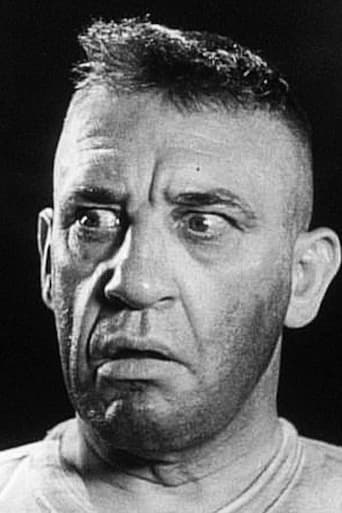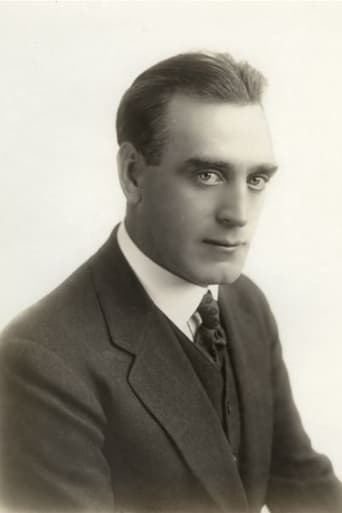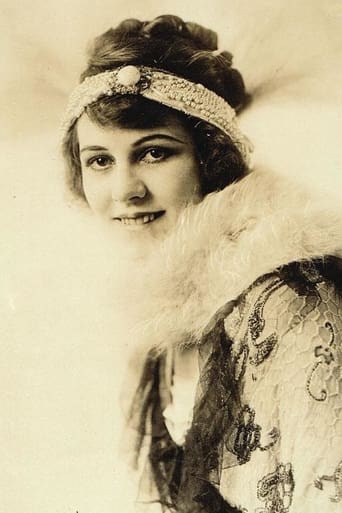Exoticalot
People are voting emotionally.
ShangLuda
Admirable film.
Dynamixor
The performances transcend the film's tropes, grounding it in characters that feel more complete than this subgenre often produces.
Lidia Draper
Great example of an old-fashioned, pure-at-heart escapist event movie that doesn't pretend to be anything that it's not and has boat loads of fun being its own ludicrous self.
disinterested_spectator
As we know, "The Birth of a Nation" (1915), directed by D.W. Griffith, justifies the institution of slavery and the rise of the Ku Klux Klan during Reconstruction as the need to protect white women from Negro lust. Later that year, Griffith also produced "Martyrs of the Alamo," which reveals that the war in which Texas declared and won its independence from Mexico was brought about by Mexican lust for white women. So many white women were being accosted by the Mexican soldiers, it seems, that the white men finally had to take up arms to protect them. When Santa Anna and his troops come in to put down the rebellion, the Texians took refuge in the Alamo, and we all know what happened next.As an example of how cruel and ruthless the Mexican soldiers are, we see a scene in which a little boy is bayonetted, his body picked up and flung out of the way. And when the battle is over, Santa Anna has anyone that survived the massacre executed, except for good-looking white women, of course. We see an old woman being taken away for execution, while a young, pretty blonde is spared. The intertitle notes that Santa Anna is an inveterate drug fiend known for his shameless orgies. Right after that, we see him grabbing the pretty blonde, but she slaps him and gets away from him. By the way, Santa Anna is played by Walter Long, the same man that played Gus in "The Birth of a Nation," the black man that tried to rape Flora.We have all heard how the Mexican soldiers were caught off guard when Sam Houston attacked at San Jacinto because they were taking their siesta. But in addition to that, according to this movie, Santa Anna, appearing somewhat stoned, is busy having women dance for him, while a Mexican guard watches the show himself instead of watching for such things as an advancing army of Texians. So, Mexican lust not only was the cause of the Texas revolution, it was also the cause of Mexico's defeat as well.
wes-connors
With its subtitle "The Birth of Texas" taking up most of the screen, it's obvious "Martyrs of the Alamo" was made to ride the coattails of D.W. Griffith's "The Birth of a Nation" (1915), which was already an astonishing success. Mr. Griffith is credited as a supervisor, and it looks like his story ideas and suggestions were taken into account. However, Griffith did not personally direct this knock-off. The creativity of Griffith's work with cameraman Billy Bitzer is not evident. Director Christy Cabanne is good at motioning the cast, but the camera positions are relatively staid. Still, as the film progresses, you will see some increasingly good movement of personage forward and backward.Mr. Cabanne would soon find success directing the soon popular Douglas Fairbanks, who appears here in "black-face". As for the story, it's about as historically accurate as you might expect for the time (meaning not very). Like most "war" films, the view is subjective. You wouldn't expect many U.S.-made World War II films to be pro-German, and "Martyrs of the Alamo" is not pro-Mexican. What really hurts is that the fictionalization adds nothing to the characters. Griffith's historical epics made up characters and situations that were much more interesting and entertaining. One line says it all - "An inveterate drug fiend, the Dictator of Mexico (was) also famous for his shameful orgies." ***** Martyrs of the Alamo (11/21/15) Christy Cabanne ~ Sam de Grasse, Allan Sears, Walter Long, Alfred Paget
Cineanalyst
"The Birth of a Nation" was the most influential film in this art form's history, and its impact on subsequent pictures can be seen in those released shortly thereafter to those made many years later, but few other films so markedly demonstrate that influence than this one, "Martyrs of the Alamo". This is seen from the opening subtitle, "The Birth of Texas", as well as in its structure, filming and editing of battle scenes, its racist depiction of Mexicans, and its glorification of white Americans and white women's virtue. Like the director of "Martyrs of the Alamo", Christy Cabanne, most of the film's actors were Griffith veterans, too. Fred Burns, Sam De Grasse, Allan Sears, Tom Wilson, and Walter Long all worked on "The Birth of a Nation", and Alfred Paget had also been a Griffith regular. Griffith himself probably didn't directly have much to do with this one, concentrating mostly on his own films, but it was one of the many Triangle pictures that he oversaw in a supervising capacity.Like "The Birth of a Nation", "Martyrs of the Alamo" is also historically inaccurate. Many of the inaccuracies seem to be made to imitate Griffith's narrative. Others, such as the odd-looking Alamo and frequency of coonskin caps are less accounted for. One of the main impetuses for the Texas Revolution is ludicrously proposed to have been to protect the virtue of the American female settlers. One title card reads: "Under the dictator's rule the honor and life of American womanhood was held in contempt." This is augmented by scenes of loafing Mexican militiamen harassing female American settles and disrespecting the men--mostly by not moving out of their way when they're passing by. Likewise, in "The Birth of a Nation", when blacks took control, they legislated interracial marriage, which was a euphemism for black men raping white women, with the KKK then depicted as the saviors of the white woman's virtue. On the issue of race, there are also a few characters in blackface, but they're mostly in the background of "Martyrs of the Alamo"; not surprisingly, the film makes no mention of Mexico's prohibition of slavery and the opposition to that by American immigrants to Texas.This film is also highly derivative of "The Birth of a Nation" and other Griffith films in its adoption and imitation of his grammar for filming battle scenes. It's that the imitation isn't bad that makes this picture entertaining. The editing is nicely fast paced, although occasionally choppy. There's extensive focus on individual skirmishes and crosscutting between those scenes. Varied camera positions are employed, including iris long shots. These sequences aren't nearly as good as those in Griffith's mature work (which were aided by cinematographer G.W. Bitzer and editors James and Rose Smith), but they're better than some other later derivative battle scenes, in addition to pre-Griffith filmed battles. Nevertheless, Cabanne and his crew really don't do anything innovative; it's copied from Griffith and his coworkers. One slight exception in differing style might be the extensive use of fades in "Martyrs of the Alamo", but they're uneven in length and purpose and often contribute to the sense of choppy editing.Some of the acting and characters in this film are rather amusing for 1915. James Bowie and Davy Crockett are played like a buddy duo from their introduction, and Paget (he also played Prince Belshazzar in "Intolerance") and Sears (also good in "Sold for Marriage"), as two of the better character actors of their day, never over-dramatized their parts. Long, however, hammed his part the most, which I think helps to deflect some of the inaccuracies and bigotry of the film. In addition to having played the Mexican leader Santa Anna here, Long played Gus in "The Birth of a Nation", the black villain who tried to rape Mae Marsh's childlike character. As Santa Anna, Long seems to have relished using broad gestures and grimacing his face. The title cards even make his character more over-the-top, especially one that describes him thusly, "An inveterate drug fiend, the Dictator of Mexico also famous for his shameful orgies." Also, Douglas Fairbanks supposedly had a bit part somewhere, this being before he became a star, but I didn't catch it. Overall, this is an entertaining imitation.(Note: The print shows signs of deterioration, but it's slight enough. The DVD quality is good for being a budget edition, and I found the score by Michael Boldt to be surprisingly and appropriately exciting, but there's an annoying Alamo trademark in the corner of the screen, which is constant. )
MartinHafer
The historical accuracy of the films of D.W. Griffith is negligible to say the least! His films seem to portray history the way Griffith wished it were instead of how it really was. In Griffith's world, the South was glorious and slavery an honorable institution--and this is pounded home in many of his films. The public ate these movies up and people thereby became ignorant of American history. His most famous film, BIRTH OF A NATION, is an amazing film to watch but as a history lesson, it's pure junk--as are many of his lesser films, such as ABRAHAM LINCOLN. Here with MARTYRS OF THE ALAMO, Griffith once again plays very fast and loose with facts. The main one you may notice when the film began is his retelling of the reasons for the Texas rebellion. While it's true that Antonio López de Santa Anna was a horrible leader (they didn't come much stupider--read up on the Pastry War and how the Mexicans lost Texas at San Jacinto to see what I mean), one of the main reasons for the war was than many Texans wanted slavery--while this was expressly forbidden by Mexican law. So at least some of the reason for this war was less than noble and Griffith, not surprisingly, ignores the evils of slavery--something he did is a much grander fashion with BIRTH OF A NATION. As for the Mexicans in the film, they are pretty indistinguishable from the Black people in BIRTH OF A NATION. In other words, many of them are Americans of European stock who were painted up with dark dye to look "Mexicany" and some behaved like jerks and sexual perpetrators! The Black people in the film were also painted like this, though they didn't really do much of anything other than sit back and watch or in an odd twist, help the Texans! Now if you aren't looking at the film as fact and look at it from a film history point of view, it is an incredible film. For 1915, it is one of the best costume dramas made in America up until this time and Griffith always had a knack for filming spectacular battle sequences. The costumes look much better than you'd see in contemporary films, though I doubt if so many of the Americans wore coonskin caps. The Mexican troops were pretty appropriately dressed and the guns were not repeating rifles like I've actually seen in a couple films set in the 1830s (they weren't invented yet or those few examples that existed were very, very rare and were mostly only test models). The sets weren't bad, though the Alamo in the film looked nothing like the actual building and there were a lot of trees and bushes where there shouldn't have been any.So overall, the film looked great and was highly entertaining for 1915. While not as patently racist as BIRTH OF A NATION (also 1915), the film is a mess historically, as many of the details of the film were wrong--though this is true in some later films as well.By the way, you may recognize the man who played Santa Ana. It's Walter Long who starred in several Laurel and Hardy films and he was a rather prolific actor during the 1930s.I actually found it one YouTube--chopped into pieces and shown in low resolution. Despite these problems, believe it or not, the sound track was excellent and the opening prologue which was recently added was very good--though I have no idea who the guy is who introduces the film. I also just checked and it's also available from NetFlix and if you are a member I suggest you try there first.





